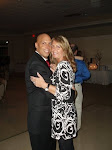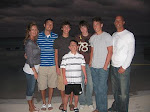U-M leading national effort to find the cause of autism
ANN ARBOR, Mich.—University of Michigan researchers are leading an 11-university consortium to gather and bank DNA samples from 3,000 autism patients over the next three years.
The Simons Simplex Collection Autism Research Initiative, expected to cost $10 million over its first two years, is being spearheaded by Catherine Lord, director of the U-M Autism and Communication Disorders Center.
The consortium also includes: Yale University, Harvard University, Boston University, Columbia University, Washington University, the University of Washington, the University of Illinois-Chicago, Emory University, McGill University in Montreal and the University of California, Los Angeles (UCLA).
"It's an exciting opportunity," Lord said. "Collecting this data will greatly speed up the process of finding the causes of autism."
The Simons initiative, begun by billionaire money manager Jim Simons and his wife, Marilyn, was set up with the goal of investing $100 million toward finding a cure for the developmental disorder. The Center for Disease Control estimates that between one and three of every 500 children contract some form of the disease.
While there are core deficits that define Autism Spectrum Disorders (ASD) there is also a great deal of heterogeneity among children and adults with ASD in terms of behaviors, level of functioning and co-morbid conditions such as mental retardation or obsessive compulsive disorder.
Recent findings in the molecular genetics of autism and in family transmission patterns suggest that there are likely several, if not many, autisms. Researchers say it is important to identify subtypes of autism that are associated with risk factors or etiologies in order to develop appropriate treatments or prevention strategies.
The Simons Initiative to create a collection of simplex (families with just one child with autism) is aimed to support research across a range of areas with an adequate sample to address different sub-types.
The Simons Initiative consists of both senior and junior investigator support as well as the creation of a bank of cell lines and phenotypic data that will be available for scientists around the world.
The concept of a publicly available (through application by scientists) databank builds on the example of the Autism Genetic Recourse Exchange (AGRE), created by Cure Autism Now several years ago as well as large scale research projects such as the Women's Health Initiative.
The Cure Autism Now effort focused on families where two or more siblings have autism but the 11-university effort will tackle the 90 percent of autism cases where the patient is the only member of the family with autism.
Families will be recruited to participate in an initial assessment and then invited into other research projects as work continues. The Simons Initiative will be carried out in existing university-based clinics by individual investigators from different universities throughout North America.
The goal is to collect well-defined, carefully characterized samples of families with one child with Autistim Spectrum Disorder and at least one typically developing child.
Lord, a nationally known pioneer in autism research, played a key role in learning how to properly diagnose two-year-olds a decade ago and is making new gains diagnosing young children at the U-M center.
While medications have helped with related conditions such as depression and hyperactivity, the best way to deal with autism is to intervene as early as possible to treat the condition, she said. Children who developed even some very simple speech skills prior to the first time they were evaluated at age two were far more likely to overcome the disorder that is now found in one out of every 200 children, she said.
Autism is a complex developmental disability that typically appears during the first three years of life. Autistic spectrum disorders impact the normal development of the brain processes related to social interaction and communication skills. Children and adults with autism typically have difficulties with verbal and non-verbal communication, social interaction and leisure or play activities.
For more information about participating in the research studies, call the center at (734) 936-8600.
My niece Heather forwarded this to me today, hopefully some day they will find a cure for this devistating disability. Thanks Heather!
Related Links:
More information on Lord
Tuesday, January 16, 2007
Subscribe to:
Post Comments (Atom)





































No comments:
Post a Comment